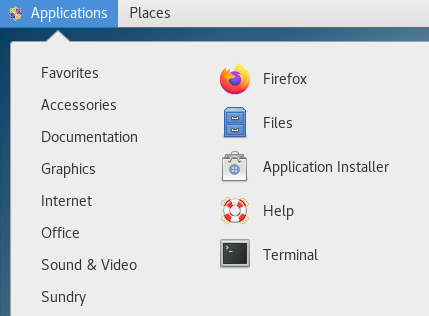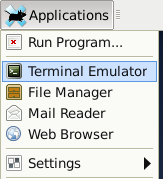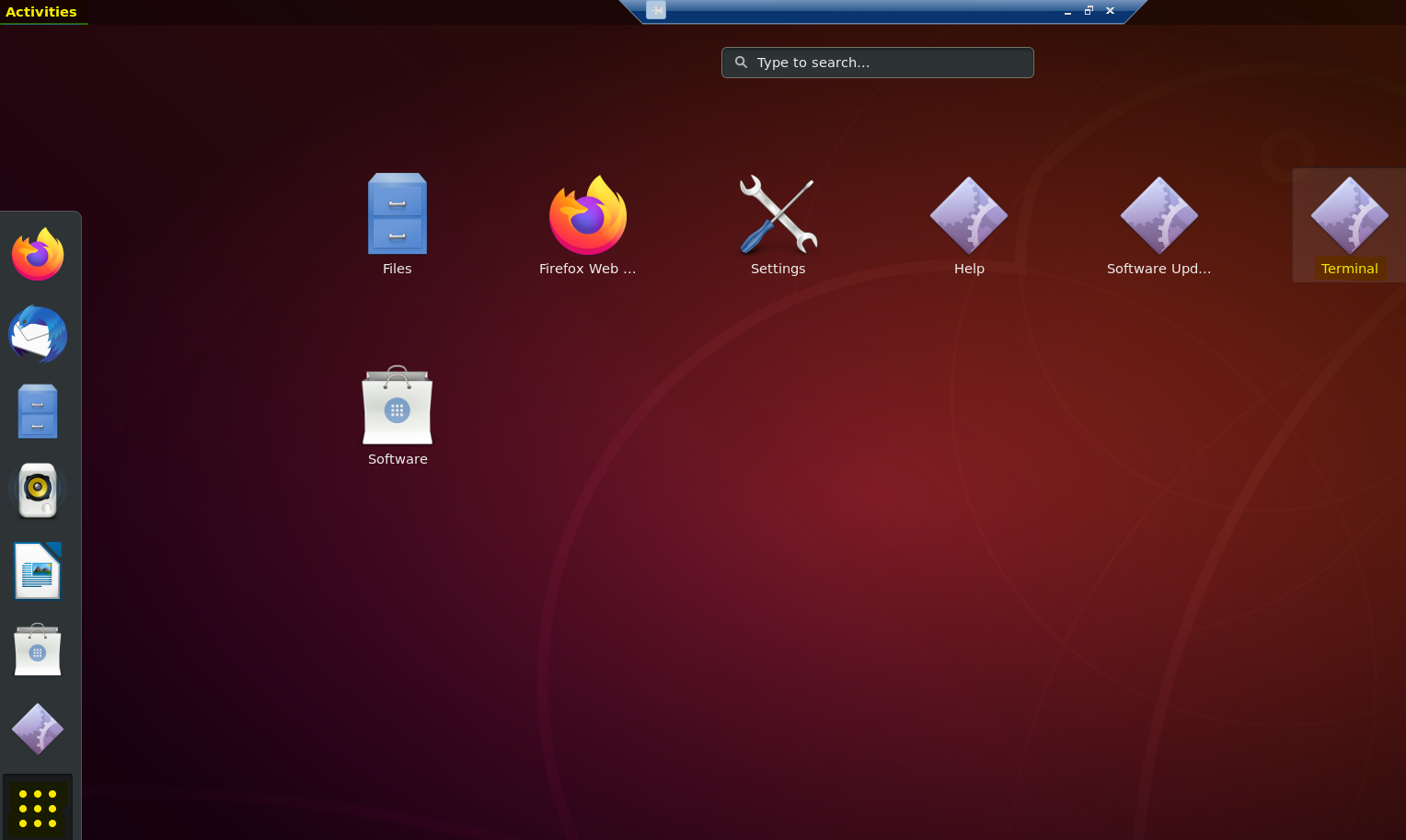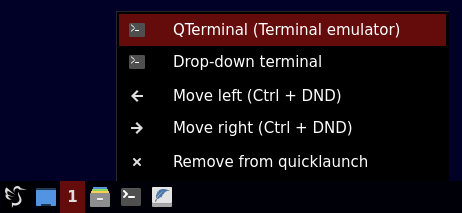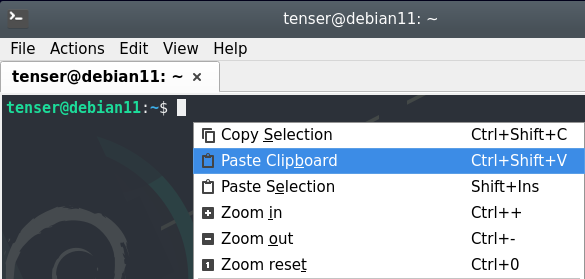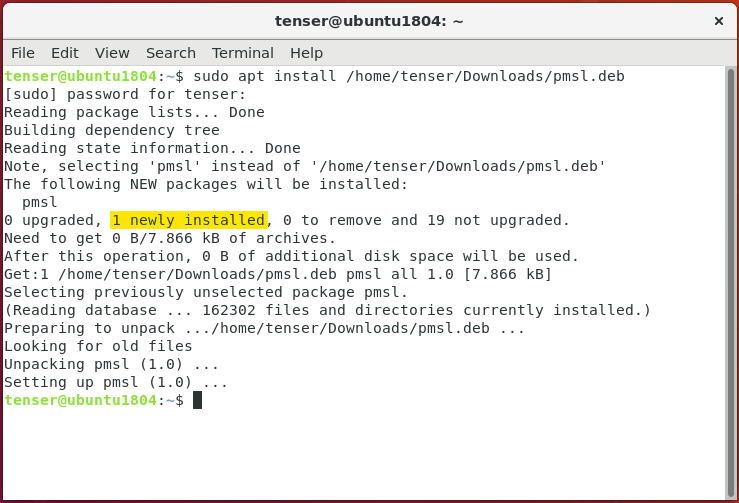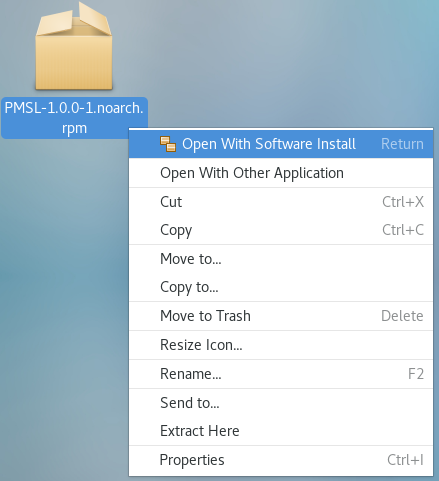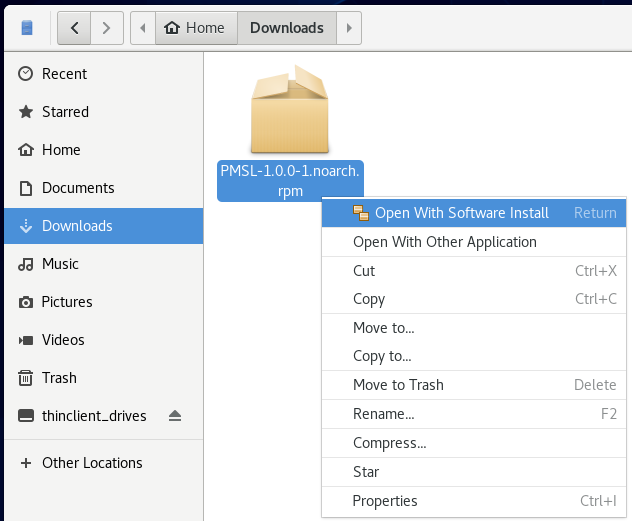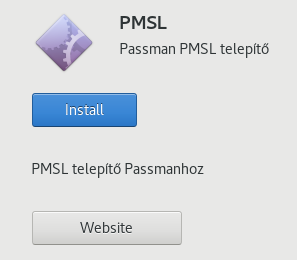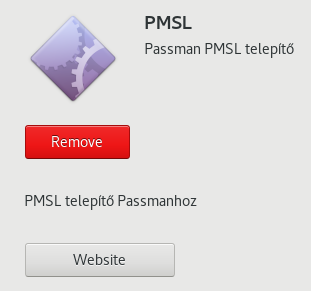linPMSL installation
For Red Hat (RHEL) based Linux (Centos, Fedora, Red Hat Enterprise Linux), install this program: pmsl-4.3.0.4.x86_64.rpm
Tested Operating systems: CentOS7, CentOS8
On a Debian based Linux machine (Ubuntu, Mint, Debian) install this: pmsl-4.3.0.4.deb
Tested compatibility:
- Debian10.10, Debian 11.1
- Min4 20.2
- Ubuntu 18.04, Ubuntu 20.4
Install from Terminal
In the remote machine's browser (e.g. Firefox), visit this wiki page and download the file matching your Linux type.
Usually, the installer will be placed in the Downloads folder.
Open Terminal (Terminal Emulator), normally located under the Applications (or Activities) menu:
In some systems, the Terminal is available on the desktop's application bar:
The installation should be done with sudo yum install OR sudo apt install, followed by the path to the file, and finally the filename
For Red Hat (RHEL) based Linux (Centos, Fedora, Red Hat Enterprise Linux) e.g.:
- sudo yum install /home/tenser/Downloads/pmsl-4.3.0.4.x86_64.rpm
For Debian based Linux (Ubuntu, Mint, Debian) e.g.:
- sudo apt install /home/tenser/Downloads/pmsl-4.3.0.4.deb
*You can select the commands with Ctrl+C, then right-click / Paste (or 'Paste Clipboard') on the remote machine
The installation will prompt for an admin password (you may also need to enter 'y')
Normally the Complete! message will appear at the bottom of the response, and the '1 newly installed' log entry is usually visible:
After the installation, type: pmsl which command will list all the options and the version number too.
Configuration options
After the pmsl create command, enter the IP address of the target which you want to reach with a 1-click connection.
then use pmsl change *configname (*which is usually IP address) to customize the settings for that specific target.
Finally, visit PassMan: from the browser of the Linux machine, then log in to Windows or Linux targets
using 1-click icons (connector buttons) :
Manual installation
In the remote machine's browser (e.g. Firefox), visit this wiki page and download the proper version to your Linux. Normally This will be placed in the Downloads folder.
Right-click on the file, then: Open With Software Install
If the process has not failed, click the Install button to finish the action (the installation will ask for an admin password).
If successful, the Remove option or other graphical feedback is displayed.
If the process fails (e.g. 'endless waiting'), you should install from Terminal instead, as it is more reliable.

